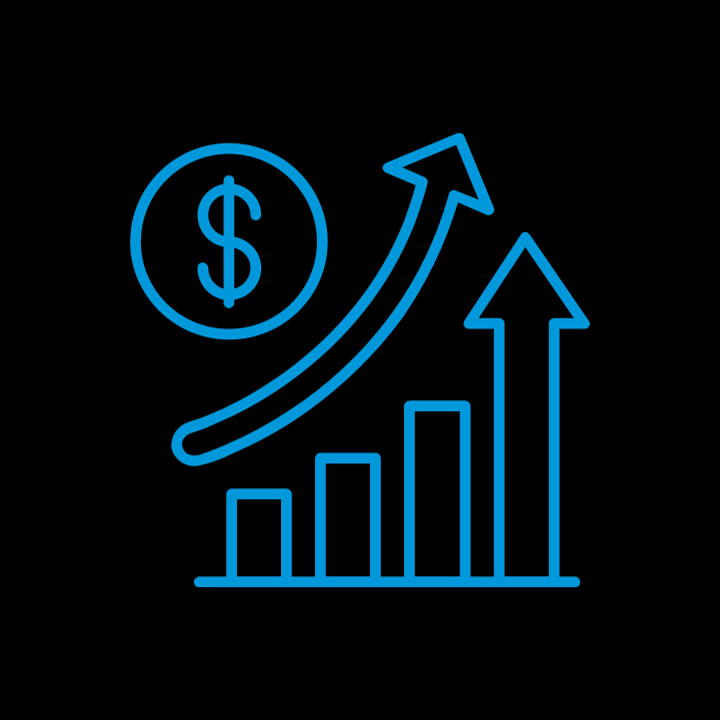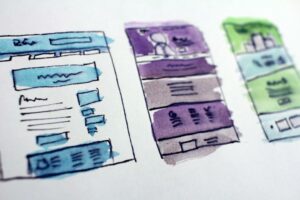Ever waited for a response to an important email? It’s like being in limbo, unable to move forward with your plans until the response arrives. You’ve got places to be, people to see, and yet, there you sit…waiting. This is where lead response time best practices come into play.
We’ve all been there – it’s frustrating!
Now imagine your potential customers feeling that same frustration while waiting for your business reply. Ouch! The clock is ticking the moment they hit ‘send’, but do we really understand its importance?
This isn’t just about manners or good customer service improving and implementing lead response time best practices is about improving your bottomline; this is a race against time where seconds could mean dollars.
The key question: How fast should you respond? Let’s unravel the power of lead response times together. Ready to unlock better conversion rates and higher customer satisfaction? Buckle up because this journey is set on turbo-speed!
Table Of Contents:
- The Importance of Lead Response Time Best Practices in Business
- The Impact of Delayed Response on Lead Conversion
- Industry Benchmarks for Lead Response Time Best Practices
- The Ideal Lead Response Time for Optimal Results
- The Risks of Not Meeting Customer Expectations for Lead Response Time
- FAQs about Lead Response Time Best Practices
- Conclusion
The Importance of Lead Response Time Best Practices in Business
Fast response to leads is like the heart pumping blood through a body—it keeps business alive and kicking. And just as seconds matter in maintaining heartbeat regularity, they’re also crucial for lead response times. Most small businesses lose revenue when they don’t have a system in place to respond and keep the attention of their prospect.
The Connection Between Lead Response Time and Conversion Rates
Time matters when it comes to making contact with leads. The quicker you reach out, the higher your chances of converting them into customers.
In fact, according to Harvard Business Review’s study, businesses that respond within an hour are seven times more likely to engage meaningfully with decision-makers than those who dawdle. That’s a massive competitive edge.
Promptness signals that you value potential clients’ time—making them feel important right from the get-go. This not only piques their interest but can also lay down the foundations for strong customer relationships.
How Lead Response Time Best Practices Influence Customer Satisfaction
We live in an era where people expect instant gratification—from fast food delivery services to next-day shipping options—and this extends even into service and marketing communication scenarios such as lead generation.
Rapid responses meet these high-speed expectations. Contributing significantly to improving overall customer satisfaction rates—a critical metric for any business aiming at long-term success.
So if we compare prompt lead response time with an attentive waiter at your favorite restaurant—they both make sure your needs are addressed quickly; keeping you happy and coming back for more.
Now imagine what could happen if businesses started treating every incoming lead like VIPs? Just think about how much better their conversion rates would be.
The bottom line here is this—time is a precious commodity. Time is of the essence in business; don’t let those opportunities slip away. When it comes to lead response time best practices, make sure you’re racing against the clock—and catching your prospects when they are most ready to buy or expect your response.
Your close rate and revenue will increase the faster you respond to your customers.
Just like a heartbeat, quick lead response times keep businesses thriving. The faster you engage with leads, the higher your chances of turning them into customers. This swift action not only shows that you value their time but also lays the groundwork for strong customer relationships and overall satisfaction. Remember: in business, every second counts—treat each lead as if they’re a golden nugget waiting to be discovered.
The Impact of Delayed Response on Lead Conversion
Responding to leads promptly is more than just good business etiquette—it’s a necessity. But why? Because the longer you wait, the colder those leads get. Harvard Business Review research found that waiting just 10 minutes can decrease your chances of conversion by an astounding 400%. It’s like ice cream on a hot day—the quicker you scoop it up, the better.
Understanding the Dangers of Procrastination in Lead Response
A prompt response doesn’t just mean sending an automated email—it means starting meaningful interactions as soon as possible.
If lead response time were a high-stakes race, picture yourself at Daytona International Speedway with competitors roaring around you. You’re sitting there idling when suddenly—you have to respond. Your car zooms off towards victory while others are left trailing behind—just because they took too long getting into gear.
This isn’t some wild imagination but stark reality backed by hard numbers—a swift action significantly increases your chances of leading and winning this race.
Dropping Temperatures Mean Dropping Sales
You know how frostbite works: first numbness, then discoloration, and finally tissue death if not treated immediately. In business terms, cold leads could be seen similarly—they’re numb (unresponsive), turn color (lose interest) and eventually die out (purchase from someone else). This might sound drastic but it paints an accurate picture.
The Costly Impact
But, let’s think about it. What does a slow response truly cost you? You might see potential customers shift their attention to your competition or lose interest entirely. The stakes are high in the world of business where time is money and every second counts. Slow responses mean you will most likely lose money to your competition.
Think of lead response time as a race against the clock. Just like ice cream on a hot day, leads melt away fast. Harvard research suggests waiting even 10 minutes can tank your conversion chances by 400%. Be the first to respond —don’t let slow responses cost you customers and give competitors an edge.
Industry Benchmarks for Lead Response Time Best Practices
Understanding industry benchmarks can give your organization an edge. For instance, lead response time is a critical metric to monitor and improve upon. How does your business measure up against the competition?
Average lead response times vary across industries, with some responding faster than others. So what’s the average? Forbes reports an average lead response time of 47 hours (HBR found 42 hours) – that’s two days for your competitors to swoop in and take your leads while you’re waiting.
Dissecting Industry-Specific Variations in Lead Response Times
The variation in response times isn’t random; it’s driven by various factors unique to each industry. Understanding these nuances can help businesses develop strategies that align better with their market dynamics.
In sectors like real estate or hospitality where immediate service is paramount, quicker responses are common practice. On the flip side, more technical fields such as IT services may have longer wait periods due to complex query handling.
This doesn’t mean one approach fits all scenarios – remember that striking a balance between promptness and thoroughness will make sure you don’t sacrifice quality for speed.
Benchmark data serves as a guide but tailoring your strategy based on customer expectations within your specific sector leads to higher conversion rates and improved satisfaction levels.“Know thyself”, said Socrates centuries ago.
It is important to ensure your business exceeds the expectations of your customers, regardless of the industry.
Don’t Make Your Customers Wait
Think about your experience as a customer. You don’t like waiting and neither do your customers.
Consider this: the odds of contacting a lead drop by 100 times if your response time stretches beyond 30 minutes, according to a Harvard Business Review study. And it doesn’t stop there – waiting just 10 more minutes can decrease conversion likelihood by a whopping 400%
Grasping the industry standards for lead response time can really boost your business. On average, it’s about 42 hours. But this isn’t set in stone and differs from sector to sector. For instance, customer-oriented industries like real estate are generally faster, while technical fields like IT take a bit more time. It’s all about finding that sweet spot between speed and quality. Don’t forget – customers aren’t known for their patience. If they’re left hanging for more than 30 minutes, you might see a dip in conversions.
The Ideal Lead Response Time for Optimal Results
As we navigate the art of lead generation, it’s crucial to understand that speed is key. It’s not enough just to get leads; you need to act on them promptly.
The Science Behind the 5-Minute Rule
You may be wondering, “What’s so special about 5 minutes?” Dr. James Oldroyd and InsideSales.com conducted an intriguing study that looked at data from multiple companies over a three-year period and uncovered something remarkable – leads contacted within five minutes had a much higher chance of being reached than those called after thirty minutes. The study analyzed three years’ worth of data across several companies and found something astonishing – leads contacted within 5 minutes were about 100 times more likely to be reached than those called after half an hour.
That’s right. Five short minutes can make or break your connection with potential customers. Think of it as catching a train – if you miss the departure by even one minute, no amount of running will help catch up with it.
This insight isn’t meant merely as some scare tactic but rather serves as powerful knowledge that can drastically boost conversion rates. Companies that put the 5-minute rule and other lead response time best practices like automated texting for a missed call win more business.
- A delay beyond this golden period significantly reduces both the contact rate (by up to tenfold) and the qualification rate (sixfold).
- If someone has shown interest in your product or service recently (within five minutes), they’re probably still near their device ready for communication.
- Your brand stays fresh in their minds during this window – making conversations more productive and effective at closing deals.
Practical Application: Making Most of the 5-Minute Rule
Knowing about this five-minute rule is only half the battle. The real challenge lies in its application, and it might seem daunting initially.
Don’t sweat it if you feel like your business doesn’t have the means to chase leads that fast. Remember, speed isn’t everything here – being efficient and effective in how you communicate matters just as much.
Speed is your ally in lead generation. Acting on leads within 5 minutes dramatically boosts the chances of reaching potential customers, as shown by a study that found such leads were about 100 times more likely to be contacted than those reached later. This quick response keeps your brand fresh in their minds and can improve deal closure rates. But if you’re unable to respond immediately, don’t worry – just make sure you follow up as soon as possible.
The Risks of Not Meeting Customer Expectations for Lead Response Time
Visualize yourself queuing up at your beloved java joint. The aroma fills the air, but they take forever to serve you. You’d feel frustrated, right? That’s how potential customers feel when businesses don’t respond quickly enough.
When we talk about lead response time, we’re talking about a ticking clock. Deloitte’s “Milliseconds Make Millions” report shows that faster website load times improve user engagement and conversion rates by up to 8%. Similarly, quick responses to leads can significantly impact conversions too.
Failing customer expectations comes with real risks:
- Like an overcooked steak can ruin a restaurant’s image, a slow lead response can damage your brand’s reputation.
- You lose out on sales opportunities: Potential customers won’t wait around either—they’ll find another vendor who responds promptly.
- Loyal customers might switch sides: Even existing clients can become frustrated if their questions or concerns aren’t addressed in a timely manner.
Customer Satisfaction = Customer Loyalty
Your customers are more than just numbers—they’re people. When they feel important and valued they will choose you over others.
Not responding to leads swiftly can sour your brand’s reputation, lose sales opportunities, and push loyal customers away. It’s like being late for a date – you risk losing interest. In our speedy digital age, time really is money. Quick lead response doesn’t just satisfy customers—it keeps them loyal.
FAQs about Lead Response Time Best Practices
What is the ideal lead response time?
The sweet spot for responding to leads is within 5 minutes. Doing so can drastically up your chances of conversion.
What is a typical best practice when responding to a lead?
Aim to respond swiftly, preferably under 5 minutes. Make sure your reply answers their questions and adds value.
Can a 1 minute response time lead to 391% more conversions?
In fact, yes. Rapid responses make customers feel valued, thus significantly increasing the likelihood of converting them into sales.
How fast should you respond to inbound leads?
You should get back on new inbound leads as quickly as possible – ideally in less than five minutes after receiving them.
Conclusion
Let’s hit the brakes and recap our turbo-charged journey. Lead Response Time is crucial – no, it’s vital! Remember, responding faster can supercharge your conversion rates.
Don’t procrastinate; time waits for no lead. A delay of even 10 minutes could mean a whopping 400% decrease in conversions!
Look around you – the industry average response time might be 42 hours, but why follow when you can lead? Aim to respond within just five minutes for optimal results.
Above all else remember this: customers are king! Not meeting their expectations? You’re risking more than just sales – think reputation and market standing.
In conclusion, nailing these Lead Response Time Best Practices will give your business that much-needed edge over competitors. Now go forth and conquer those leads!
At Concussion, we are experts in lead generation best practices including lead response time best practices. If your business is ready to scale, we can help.









